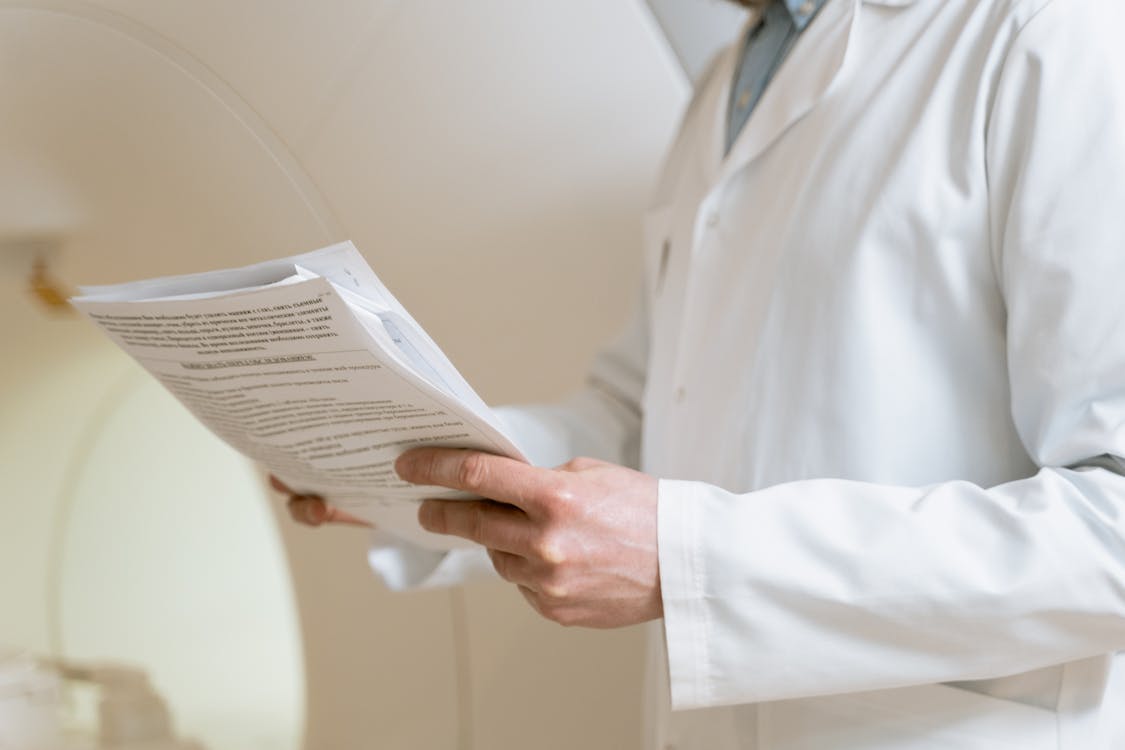Clinical Findings Documentation: Best Practices
Medical
Clinical Findings Documentation remains a vital aspect of healthcare delivery. However, healthcare professionals often face significant challenges in capturing, organizing, and presenting clinical information effectively. These challenges can lead to inaccurate records, the potential for misdiagnosis, and ultimately impact patient care. Therefore, implementing robust documentation strategies is critical. This guide highlights 10 actionable steps aimed at addressing the most common challenges faced in Clinical Findings Documentation.
1. Recording Physical Examination Accurately
Accurate recording of physical examination findings is essential for effective patient care. According to various studies, misdocumentations often lead to inconsistencies in patient records, potentially affecting treatment outcomes. A study published in the Journal of Clinical Care revealed that thorough documentation practices directly correlate with improved patient outcomes and reduced liability for healthcare providers.
Key aspects to consider:
- Standardized Templates: Utilize standardized examination templates to ensure that all relevant information is captured consistently.
- Digital Tools: Implement electronic health record (EHR) systems that facilitate easy input during examinations.
- Training Sessions: Conduct regular training for staff on documentation best practices.
For instance, a hospital implementing EHR led to a 30% increase in the accuracy of recorded physical findings.
Advanced methodologies encourage clinicians to adopt a systematic approach to documentation. This involves:
- Real-time Data Entry: Encourage clinicians to document findings in real-time to increase accuracy.
- Checklist Utilization: Implement checklists during physical examinations to ensure no aspects are overlooked.
Despite the advancements in documentation processes, challenges do exist. One common issue is clinicians' resistance to adapting to new tools. Engaging staff in the adoption process and highlighting the benefits of accurate documentation can help alleviate these concerns.
 Effective documentation practices in healthcare enhance the quality of patient data.
Effective documentation practices in healthcare enhance the quality of patient data.
2. Presenting Laboratory Results Clearly
Clear presentation of laboratory results is crucial for making timely and informed clinical decisions. Studies indicate that unclear result documentation can result in diagnostic delays and unnecessary repeat testing, complicating patient management.
Important considerations:
- Standardized Reporting Formats: Use standardized formats for laboratory results to enhance readability.
- Summary Sections: Include summary sections at the top of reports that highlight critical values and abnormalities.
- Visual Aids: Employ graphs and charts to enhance the interpretation of results.
For example, a study showed that hospitals adopting color-coded reporting formats saw a reduction in test result misinterpretation by 25%.
To enhance the practical implementation of lab result documentation:
- Training on Interpretation: Provide training for staff on efficiently interpreting lab reports to facilitate better communication with patients.
- Integration with Clinical Decision Support Systems (CDSS): Utilize CDSS to flag abnormal results automatically.
Emerging methods in lab result presentations, such as the integration of artificial intelligence, are guiding the next steps in enhancing clarity and efficiency in reporting.
3. Documenting Imaging Studies Effectively
Imaging studies form a critical part of Clinical Findings Documentation. Nonetheless, discrepancies in imaging documentation can arise, leading to misdiagnosis or treatment errors. According to recent research, 40% of imaging discrepancies can potentially alter patient management strategies.
Key aspects to address:
- Protocol Development: Establish clear protocols for documenting imaging findings, including the necessity for descriptions, locations, and possible implications.
- Standardized Nomenclature: Use standardized terminology for consistency.
- Collaborative Review: Encourage interdisciplinary teams to review imaging results collaboratively.
An example of successful documentation includes a multidisciplinary meeting established in a radiology department, which increased communication and decreased discrepancies.
Practical implementations could include:
- Real-time Access to Imaging: Utilize platforms that allow real-time access to imaging studies for reviewing alongside clinical findings.
- Documentation Audits: Conduct regular audits of documented imaging results to identify trends or discrepancies.
The potential for telemedicine platforms to integrate imaging documentation will further streamline this process.
 Collaborative review of imaging studies enhances Clinical Findings Documentation.
Collaborative review of imaging studies enhances Clinical Findings Documentation.
4. Organizing System-wise Findings
Efficient organization of findings aids in improving the quality and speed of documentation. However, disorganized notes can lead to confusion and misinterpretation of patient information.
Considerations to enhance organization:
- Systematic Categorization: Systematically categorize findings based on systems (e.g., cardiovascular, respiratory).
- Use of Color Coding: Develop color-coded systems for quick visual reference.
- Cloud-Based Solutions: Implement cloud-based documentation systems for easy organization and retrieval of data.
For instance, a clinic that categorized its clinical findings based on systems saw a 50% decrease in retrieval time for patient data.
Further tips for practicality:
- Training on Organizational Tools: Offer training sessions on available organizational tools within EHR systems.
- Feedback Mechanisms: Develop a feedback mechanism regarding the organization of findings from users for continuous improvement.
Emerging tools, such as AI-driven digital assistants, can help automate portions of the categorization process.
5. Comprehensive Diagnostic Test Reporting
Concise and thorough diagnostic test reporting is essential, yet challenges persist. Inadequate documentation can lead to diagnostic ambiguity, creating a disconnect between clinical findings and outcomes.
Key considerations:
- Clear Guidelines: Develop clear guidelines on what constitutes a complete diagnostic report.
- Key Indicators Highlighting: Highlight essential indicators within reports to help clinicians make informed decisions quickly.
- Facilitate Cross-Disciplinary Communication: Encourage communication channels among various specialties involved in diagnosing.
A quality initiative can include a structured reporting tool that ensures consistency and completeness within diagnostic tests.
Practical applications might involve:
- Review of Historical Data: Regularly review historical diagnostic data for common trends or patterns that may need addressing.
- Engage in Peer Reviews: Incorporate peer reviews to ensure the quality of diagnostic reporting.
With advancements in reporting technologies expected to grow, opportunities for interdisciplinary collaboration on diagnostic reporting will continue to evolve.
...
Common Questions Answered
What are essentials of Clinical Findings Documentation?
Clinical Findings Documentation should include accurate recording of patient histories, physical examinations, laboratory results, imaging study findings, and treatment notes. Consistent use of standardized formats helps ensure information is easily retrievable and understandable.
How can digital tools help in improving documentation?
Digital tools like electronic health records (EHRs) enhance documentation by making it easier to enter, locate, and share clinical information. They enable real-time data capture, standardized reporting, and automated alerts for outliers or critical values.
What are the best practices for organizing clinical findings?
Best practices include categorizing findings by organ system, using coding or visual aids for quick reference, training staff on organizational tools, and conducting audits for continuous improvement.
Best Practices for Clinical Findings Documentation
- Utilize Standardized Templates: Standardized templates ensure that all clinicians capture critical data consistently.
- Incorporate Real-Time Documentation: Real-time documentation minimizes errors and enhances the accuracy of findings.
- Establish Clear Protocols and Guidelines: Clear protocols simplify processes and ensure all necessary information is captured.
- Encourage Team Collaboration: Interdisciplinary collaboration fosters better communication and improves patient management.
- Leverage Technology Effectively: Use available technology to streamline processes and enhance data visibility.
 Teamwork enhances the effectiveness of Clinical Findings Documentation.
Teamwork enhances the effectiveness of Clinical Findings Documentation.
Key Takeaways
| Key Point | Clinical Findings Documentation |
|---|---|
| 1 | Accurate recording of physical examinations leads to better patient care. |
| 2 | Clear presentation of laboratory results reduces diagnostic delays. |
| 3 | Effective documentation of imaging studies minimizes discrepancies. |
| 4 | Organized findings streamline diagnostic processes. |
| 5 | Comprehensive diagnostic test reporting improves treatment outcomes. |
Implementing these strategies will streamline Clinical Findings Documentation, helping to deliver high-quality patient care while enhancing organizational efficiency.